FRUITS TO KNOW AND LOVE
(A sampling of easily identified tree fruits)
I. Several Super Samaras
A samara is a dry one-seeded fruit that has a wing for wind dispersal. It is a common type of tree fruit, and they are generally easy to tell apart. species-wise.
Ash (Fraxinus) samaras are shaped somewhat like little boat paddles, with the seed at one end, and without any projections. The one shown here is BLUE ASH. It s shorter and broader than most other ashes, with a little twist to the wing.
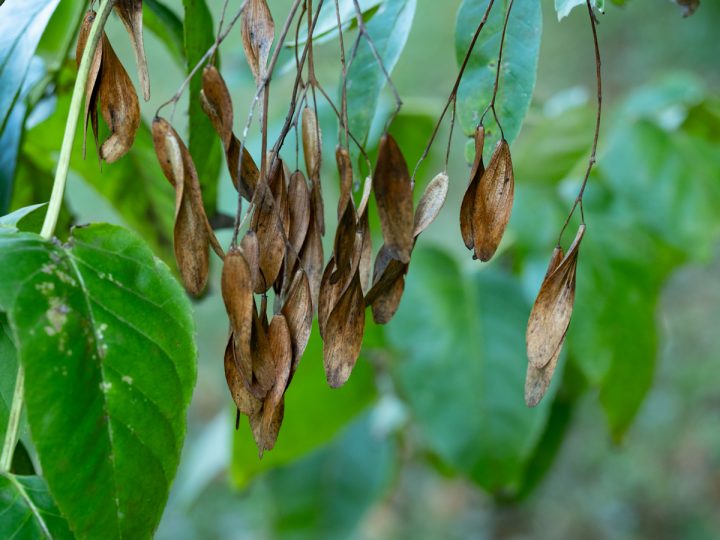
Blue ash samaras
An especially common ash, GREEN ASH (Fraxinus pennsylvanica) has narrow samaras tapered at each end.

Green ash samaras are narrow and pointed.
TULIP TREE (Liriodendron) samaras are derived from an apocarpous gynoecium, where they are spirally inserted on the receptacle of a big showy flower. After they have fallen, there is a distinctive keel-like projection at the lower end.
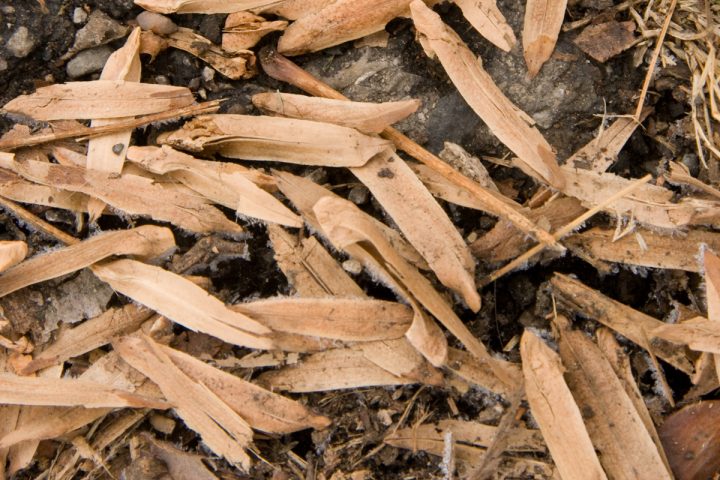
Tulip-tree samaras
Maple (Acer) samaras are famously doubled up, looking like little boomerangs. They eventually split apart, so some sources refer to them as “schizocarps” (a term I refer to reserve for the Apiaceae). This particular one is BOXELDER MAPLE: note the many-fruited raceme, and the acute angle formed by the two conjoined samaras.
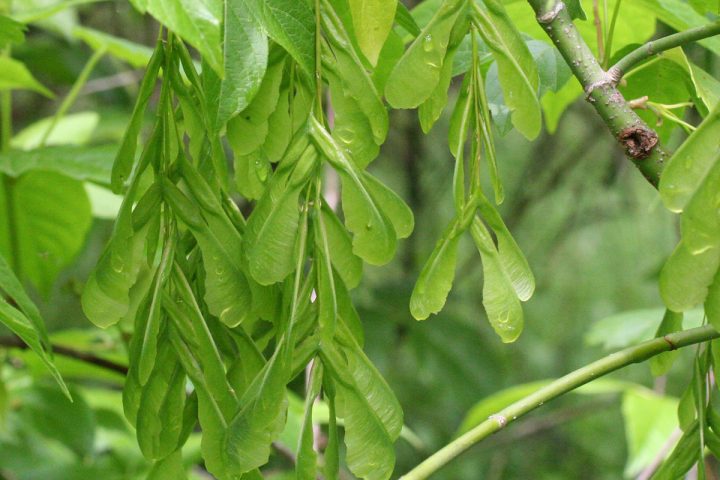
boxelder maple samaras
TREE OF HEAVEN (Ailanthus altissima) is a weedy invasive non-native tree that is a problem in open woodlands. Its fruits are easy to recognize–they are pinky-sized twisted samaras with a centrally located (not terminal) seed.
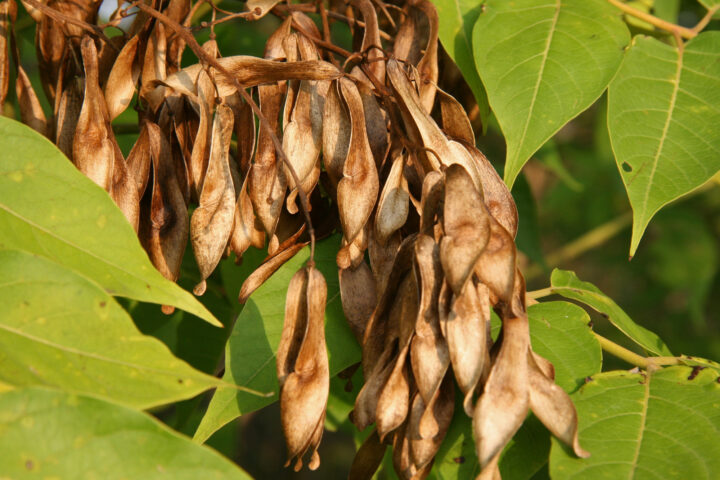
tree of heaven samaras
II. Give Legumes some Leg Room
Members of the fabulous Fabaceae and some closely related families have a unicarpellate gynoecium that matures into a legume: a dry fruit that splits open along two sutures.
REDBUD (Cercis) legumes are about 5 cm long, and drawn to a point at both ends.They are arranged all along the branches of this small tree.
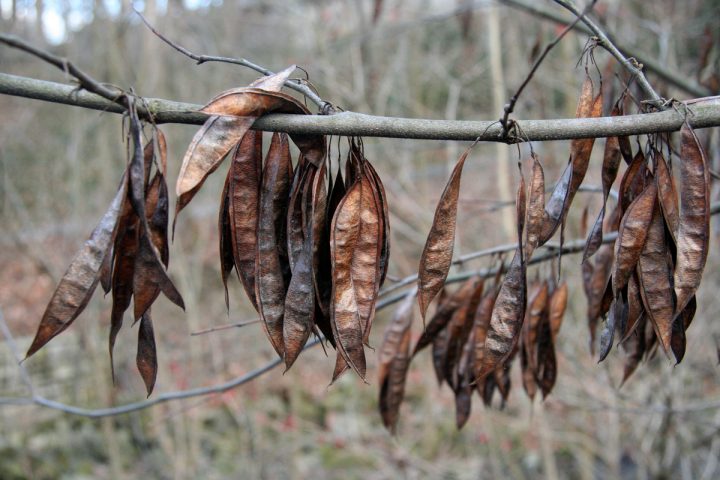
redbud legumes
HONEY_LOCUST (Gleditsia) legumes are about 10 cm long, strap-shaped and twisted.
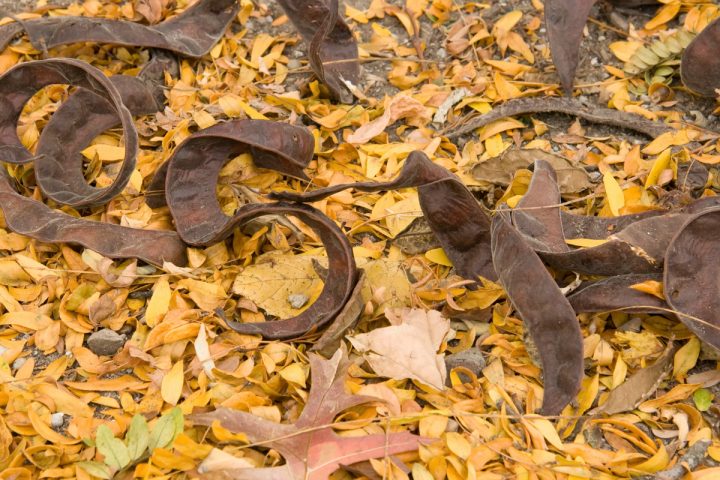
honey-locust legumes
III. Drupes in Few-fruited clusters with a Folicaeous Bract!
BASSWOOD (Tilia) fruits are pea-sized drupes. They are disposed in few-fruited clusters, with a wing-like foliaceous (leafy) bract that enables them to travel by air.
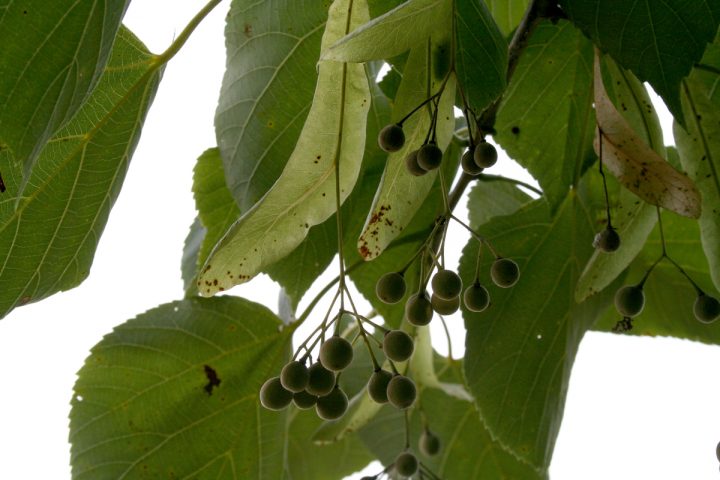
basswood drupes
IV. Multiple Fruits
Many small fruits packed together as a single dispersal unit –if they come from one flower (apocrpous gynoecium) they are aggregste fruits, and if from many flowers on a head-like inflorescence (capitulum) it is a multiple fruit. SWEETGUM (Liquidambar) is a multiple of capsules.
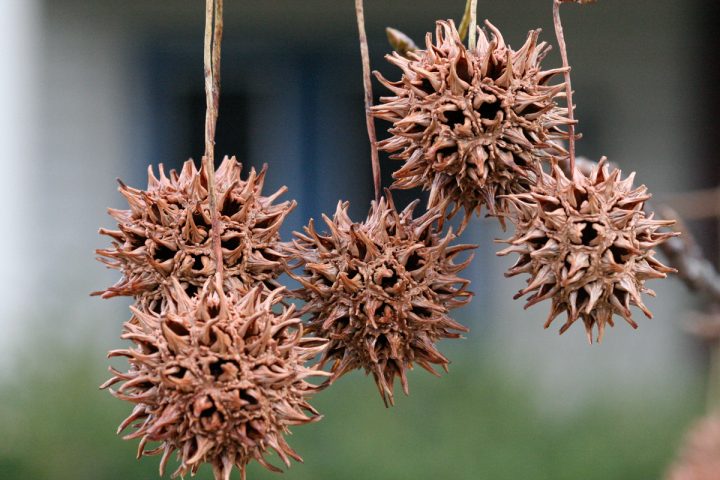
sweetgum multiple of capsules
Although they are annoying, especially when they’ve fallen off the tree and you are putting out the garbage in your bare feet (hypothetically speaking of course), the sweetgum fruits are excellent finch feeders. This moment in April 2009 was a big thrill. White-winged crossbills!!!!
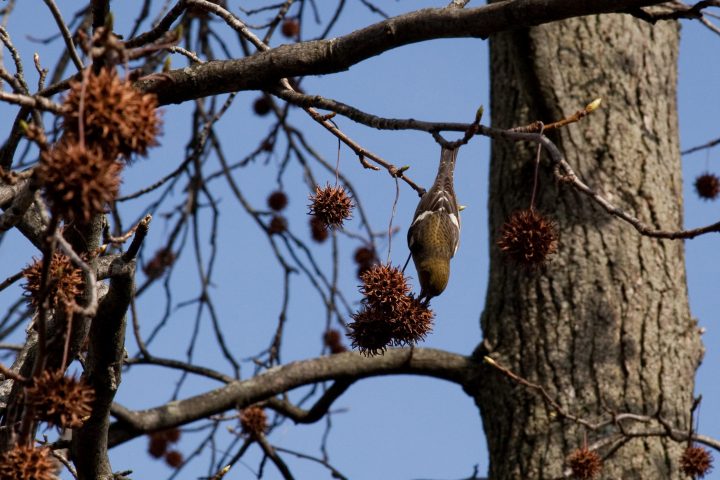
white-winged crossbill!
Meanwhile, across the street we have a huuuuuge AMERICAN SYCAMORE (Platanus occidentalis). Its fruits are multiples of capsules, each surrounded by a tuft pf hairs to aid in wind dispersal.
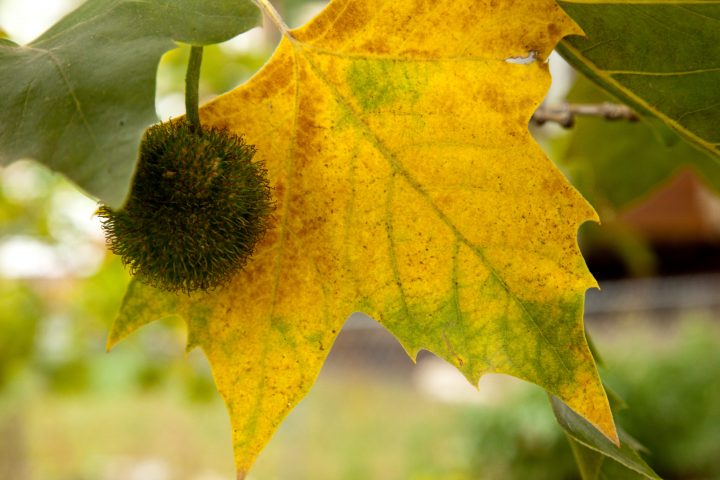
American sycamore fruit is a multiple of achenes.
